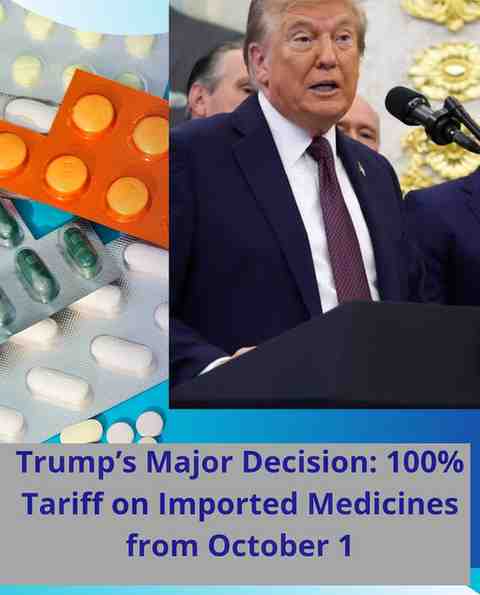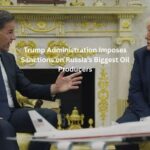Trump’s Major Decision: 100% Tariff on Imported Medicines from October 1

The Catch: EU and Japan Get a Softer Deal
While the headline looks harsh, there’s a caveat. Imports from the European Union and Japan will face only a 15% tariff cap. This is significant because together these two regions supply nearly three-fourths of America’s pharma imports. Most of these are patented specialty drugs, such as the Danish-made Wegovy and Ozempic, popular for diabetes and weight-loss treatment.
But the impact could be brutal for patients needing cancer therapies or rare-disease drugs, where there are few alternatives. Insurance companies are also expected to shift the burden onto patients by increasing premiums. एक Ernst & Young report बताती है कि सिर्फ 25% tariffs भी U.S. patients का सालाना खर्च $51 billion तक बढ़ा सकता है. With 100%, the pinch will be much harder.
Starting October 1, U.S. President Donald Trump will impose a 100% tariff on all imported branded and patented medicines. In plain words, यह move directly weaponises access to health care in America — a country where prescription drugs already account for about 10% of household medical spending.
Where Does India Stand?
For now, India’s sprawling generic drug industry has escaped. Generics make up 90% of prescriptions in the U.S., but only 13% of spending, making them vital for affordability. In FY25, India exported medicines worth $10.5 billion to America.
However, uncertainty looms. अगर Trump future में generics या biosimilars को भी tariff list में जोड़ देते हैं, it would directly hit India’s most successful export sector. There’s also doubt over Active Pharmaceutical Ingredients (APIs), the raw materials for medicines. Here, India and China dominate the global market. If APIs get targeted, the disruption could shake the entire pharma chain.
Trump’s Strategy: Build in the U.S. or Pay the Price
Trump’s rationale is simple: companies must manufacture inside America. In his Truth Social post, he even defined what qualifies:
👉 “‘IS BUILDING’ will be defined as, ‘breaking ground’ and/or ‘under construction.’”
Meaning — अगर pharma company U.S. में factory बना रही है, its products won’t face tariffs.
And the strategy seems to be working. Several major drugmakers have already announced mega investments:
- Eli Lilly: $6.5 billion plant in Houston
- Another $5 billion facility outside Richmond, Virginia
Industry experts say most big pharma players won’t be hit badly because they already have projects underway. For example, stocks of AstraZeneca, GSK, Novartis, Sanofi even went up after Trump’s announcement. On the other hand, some Asian pharma firms like Samsung Biologics, Daiichi, WuXi AppTec saw sharper declines, reflecting investor nervousness.
Why This Matters Globally
For decades, medicines were kept outside tariff wars due to fears of shortages and cost escalation. अब Trump ने इसको भी political weapon बना दिया है. His move is not just about drug costs — it signals how global supply chains, built after World War II, are now being rewritten by politics.
Countries like the U.K., Switzerland, and Singapore — major pharma hubs — are staring at a 100% tariff burden. Their products may become too expensive in the U.S. market unless they quickly build U.S.-based facilities.
For India, the takeaway is clear:
- We can’t remain overdependent on U.S. demand.
- Pharma exports must diversify into new geographies.
- Trade alliances beyond America are now a necessity, not just a choice.
Trump is selling these tariffs as a way to lower drug costs and strengthen U.S. supply chains. But experts say the opposite will happen: retail drug prices for advanced therapies will likely rise.
For Americans, this means higher medical bills. For the world, especially countries like India, it’s a reminder that politics can rewrite trade overnight.
In short, ये decision सिर्फ U.S. patients को नहीं, बल्कि पूरी global pharma industry को हिला सकता है.



